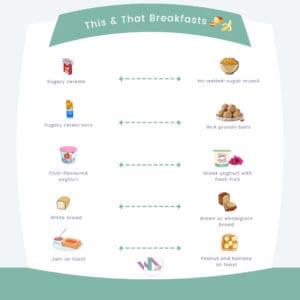
In our The Facts About Micronutrients post we explained the difference and role of the two micronutrients vitamins and minerals. We now wanted to zone in on vitamins and why they are so important. There are 13 essential vitamins, A, C, D, E, K, and 8 B vitamins.
Vitamins are divided into two groups: fat soluble and water soluble.
✅ FAT SOLUBLE
Fat soluble vitamins are absorbed with the other fats from the food you eat. When they are absorbed in this way, they go with the fats and are stored in your body’s fat tissue and liver. Fat soluble vitamins can stay in your body for a while. When they are stored in your body’s fat, they can be stored for up to 6 months until your body needs them.
🥜☀️ The primary fat soluble vitamins in your diet are vitamins A, D, E, and K. Each one has its important function and can be found in a variety of foods but are mostly found in foods such as meat, dairy products, vegetable oils and nuts. Vitamin D can also be made by the body creates from direct sunlight on the skin when outdoors.
✅ WATER SOLUBLE
Water soluble vitamins aren’t long-term like fat soluble vitamins. They don’t get stored in your body. They enter your bloodstream, and anything your body doesn’t need is eliminated through your urine. Since water soluble vitamins don’t last long in your body, they need to be replenished frequently.
🧀🥬 Water soluble vitamins include Vitamin C and several B vitamins. Each one has its important function and can be found in a variety of foods including animal and dairy products, carrots and leafy green vegetables.
We will be sharing more information on the function and sources of the main vitamins over the coming weeks so stay tuned for more details 👀



